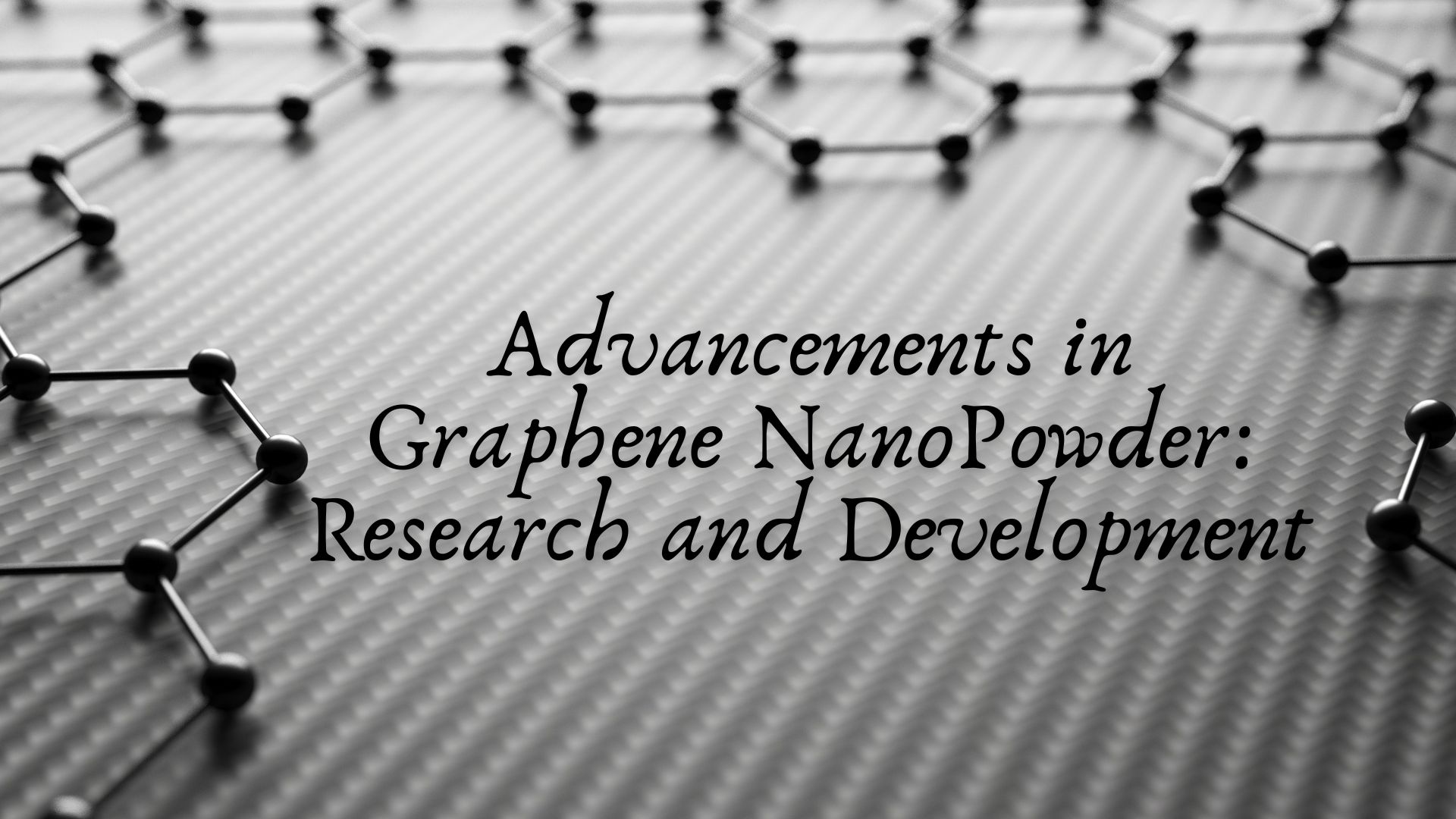Advancements in Graphene NanoPowder: Research and Development
Graphene, a single layer of carbon atoms arranged in a two-dimensional honeycomb lattice, has garnered significant attention since its isolation in 2004. Its extraordinary mechanical, electrical, and thermal properties make it a material of great interest across various fields. One of the most exciting developments in this area is graphene nanopowder, which has shown immense potential in revolutionizing numerous industries. This article delves into the latest advancements in graphene nanopowder research and development, exploring its synthesis methods, properties, and wide-ranging applications.
Synthesis of Graphene NanoPowder
Chemical Vapor Deposition (CVD)
Chemical Vapor Deposition (CVD) is one of the most common methods for producing high-quality graphene nanopowder. In this process, gaseous precursors react on a substrate, resulting in the deposition of graphene layers. Advances in CVD techniques have allowed for greater control over the size and thickness of the graphene nanopowder, improving its suitability for various applications.
Mechanical Exfoliation
Mechanical exfoliation involves peeling layers from graphite to produce graphene. This method, while not suitable for large-scale production, has been refined to produce high-quality graphene nanopowder. Innovations in this technique have led to better yields and more consistent particle sizes, making it valuable for research and niche applications.
Liquid Phase Exfoliation
Liquid phase exfoliation (LPE) is another method that has gained traction for its scalability and cost-effectiveness. In LPE, graphite is dispersed in a liquid medium and subjected to ultrasonication, causing the layers to separate into graphene sheets. Recent advancements in LPE have focused on optimizing the dispersion mediums and sonication parameters to enhance the quality and yield of graphene nanopowder.
Reduction of Graphene Oxide
Graphene oxide (GO) can be reduced to produce graphene nanopowder. This chemical reduction process involves the removal of oxygen-containing groups from GO, resulting in the formation of reduced graphene oxide (rGO). Advances in this area have led to more efficient reduction methods, producing higher quality rGO with properties similar to pristine graphene.
Properties of Graphene NanoPowder
Electrical Conductivity
Graphene nanopowder exhibits exceptional electrical conductivity due to its high carrier mobility and density. This property makes it an excellent candidate for applications in electronics, sensors, and energy storage devices. Recent research has focused on improving the conductivity of graphene nanopowder through doping and functionalization.
Mechanical Strength
Graphene is renowned for its mechanical strength, being approximately 200 times stronger than steel. Graphene nanopowder retains this property, making it a valuable additive in composite materials to enhance their mechanical properties. Advancements in understanding the dispersion and interaction of graphene nanopowder in matrices have led to the development of stronger, lighter materials.
Thermal Conductivity
The thermal conductivity of graphene nanopowder is another standout property, with potential applications in thermal management systems. Its ability to efficiently dissipate heat makes it ideal for use in electronics, where overheating can be a significant issue. Research is ongoing to further enhance the thermal conductivity of graphene nanopowder and integrate it into various thermal management solutions.
Optical Properties
Graphene nanopowder also possesses unique optical properties, including high transparency and broadband absorption. These characteristics are being explored for applications in optoelectronics, photodetectors, and even in developing advanced display technologies. Recent studies have focused on tuning the optical properties of graphene nanopowder through structural modifications and chemical functionalization.
Applications of Graphene NanoPowder
Energy Storage
One of the most promising applications of graphene nanopowder is in energy storage devices such as batteries and supercapacitors. Its high surface area and excellent conductivity enhance the performance of these devices, leading to higher energy densities and faster charging times. Research efforts are concentrated on improving the integration of graphene nanopowder into electrode materials to create next-generation energy storage solutions.
Composite Materials
Graphene nanopowder is increasingly being used to develop advanced composite materials. By incorporating it into polymers, metals, and ceramics, researchers have created composites with enhanced mechanical, thermal, and electrical properties. These materials have applications in aerospace, automotive, and construction industries, where performance and durability are critical.
Electronics and Sensors
The exceptional electrical properties of graphene nanopowder make it a suitable material for electronics and sensor applications. It has been used to develop flexible electronics, transparent conductive films, and highly sensitive sensors. Recent advancements include the integration of graphene nanopowder into wearable devices and the development of graphene-based transistors and circuits.
Biomedical Applications
Graphene nanopowder’s biocompatibility and unique properties have opened up new possibilities in the biomedical field. It is being explored for drug delivery, bioimaging, and tissue engineering. Research is ongoing to understand its interactions with biological systems and to develop safe and effective biomedical applications.
Environmental Applications
Graphene nanopowder has potential applications in environmental remediation, such as water purification and air filtration. Its high surface area and adsorptive properties enable the efficient removal of pollutants and contaminants. Advances in this area are focused on developing scalable and cost-effective methods for utilizing graphene nanopowder in environmental applications.
Future Directions and Challenges
Scalability and Cost
One of the primary challenges in the widespread adoption of graphene nanopowder is the scalability and cost of production. While significant progress has been made in developing various synthesis methods, producing high-quality graphene nanopowder at an industrial scale remains a challenge. Future research will need to focus on optimizing production processes to make graphene nanopowder more accessible and affordable.
Functionalization and Integration
To fully realize the potential of graphene nanopowder, effective functionalization and integration into various matrices and devices are essential. Research is ongoing to develop methods for functionalizing graphene nanopowder with different chemical groups to enhance its compatibility with other materials. Additionally, integrating graphene nanopowder into complex systems and devices requires innovative approaches to overcome technical challenges.
Environmental and Health Impacts
As with any new material, understanding the environmental and health impacts of graphene nanopowder is crucial. Studies are being conducted to assess its toxicity and long-term effects on human health and the environment. Ensuring the safe production, handling, and disposal of graphene nanopowder will be essential for its sustainable development and application.
Conclusion
Graphene nanopowder represents a significant advancement in nanomaterial technology, with a wide range of potential applications across various industries. The ongoing research and development efforts are focused on overcoming the challenges associated with its production, functionalization, and integration. As these challenges are addressed, the impact of graphene nanopowder is expected to grow, paving the way for innovative solutions in energy storage, electronics, biomedical applications, and more. The future of graphene nanopowder holds great promise, and continued advancements will undoubtedly lead to groundbreaking developments in science and technology.






